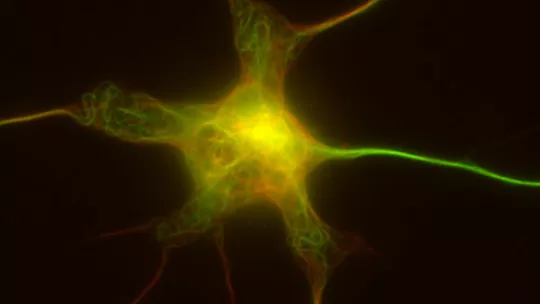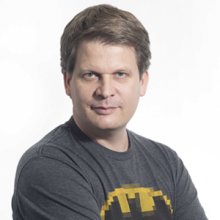Images
The study, led by IRB Barcelona and published in Nature Communications will help research into regenerative medicine and potentially also help understand neurodegenerative diseases such as Alzheimer’s.
Scientists at the Institute for Research in Biomedicine (IRB Barcelona), headed by Jens Lüders, group leader of the Microtubule Organization Laboratory, have described a new molecular mechanism that plays a key role in forming and maintaining axons. Their work appears in Nature Communications.
Neurons send a constant flow of substances and signals along axons, which are neuronal extensions that in humans can reach lengths of up to one meter. Inside axons is a dense network of microtubules, thin filaments that drive the growth of the axon, and at the same time serve as transport channels for cellular components.
“Neurons are cells that are especially dependent on microtubules, not only to transport internal cellular components, but also to facilitate communication between themselves. Curiously, until now we haven’t known how these microtubules are formed and organized,” says Jens Lüders.
Repurposing of a molecular complex used in cell division
Studying hippocampi in mice, the researchers observed that differentiated neurons – those that had lost the ability to divide – use a molecular complex that until now has only been known to play a role in cell division to generate new microtubules within their axons.
“This complex plays a determining role in the formation and maintenance of the neuronal axon, one of the most enigmatic cellular structures,” comments the first author of the study Carlos Sánchez-Huertas, postdoctoral researcher in Lüders group at IRB Barcelona and currently at the Centre de Recherche de Biologie Cellulaire (CNRS) in Montpellier. “I believe scientists will discover more cases of cell division proteins being re-used by post-mitotic cells for other molecular activities.”
The scientists propose that in neurons, the complexes formed by Augmin and g-Tubulin (γTuRC) promote the formation of new microtubules along already existent ones. The new microtubule ‘inherits’ the same orientation as the previous one, leading to the formation of bundles of microtubules with the same polarity, which is a fundamental characteristic of axons.
Understanding how microtubules form and how they are organized in a complex and structured network within neurons is key to making advances in neuroscience. These processes can offer insight into the regeneration of axons, a step that is necessary for medullar lesion repair, but which still remains be achieved. The study also may provide insight into neurodegenerative diseases, such as Alzheimer’s, in which the microtubule network is damaged.
This research was funded by the Ministry of Economy and Competitiveness, and FEDER, and included a collaboration with scientists from the University of Barcelona.
Reference article:
Carlos Sánchez-Huertas, Francisco Freixo, Ricardo Viais, Cristina Lacasa, Eduardo Soriano &Jens Lüders
Nature Communications (July 2016) doi: 10.1038/ncomms12187
About IRB Barcelona
The Institute for Research in Biomedicine (IRB Barcelona) pursues a society free of disease. To this end, it conducts multidisciplinary research of excellence to cure cancer and other diseases linked to ageing. It establishes technology transfer agreements with the pharmaceutical industry and major hospitals to bring research results closer to society, and organises a range of science outreach activities to engage the public in an open dialogue. IRB Barcelona is an international centre that hosts 400 researchers and more than 30 nationalities. Recognised as a Severo Ochoa Centre of Excellence since 2011, IRB Barcelona is a CERCA centre and member of the Barcelona Institute of Science and Technology (BIST).










